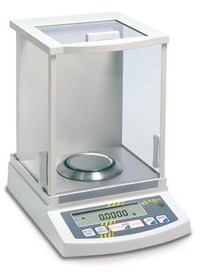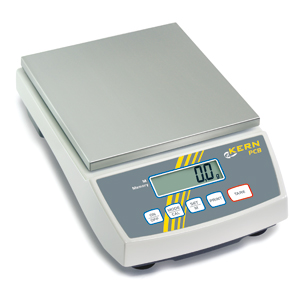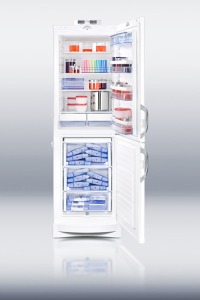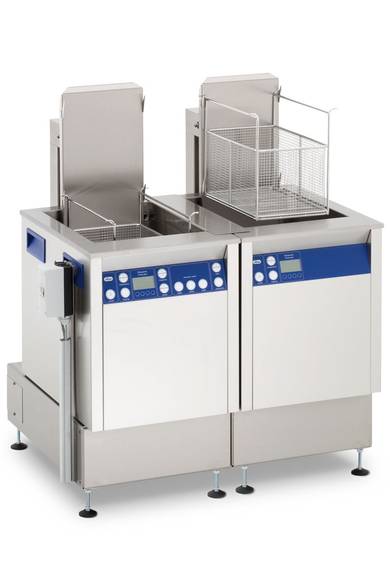Posts by Rachel Kohn
Dual-Compressor Lab Refrigerator-Freezer
Research labs, healthcare facilities and similar organizations faced with limited storage capabilities for drugs, vaccines and other valuable perishables can solve the problem with a 2-foot square x 79-inch high combination scientific refrigerator-freezer with separate compartments each with its own door, temperature control and compressor.
The combination CP171TOV-MED medical refrigerator/freezer available from Tovatech has approximately 7.2 cubic feet of refrigerator space and 3.6 cubic feet of freezer space, each compartment with its own digital thermostat and high/low temperature alarm. The upper auto-defrost refrigerator has a temperature range of 2 – 8˚C (35.6 – 46.4˚F) and is equipped with three adjustable wire shelves, two crispers and door-mounted shelves. The lower manual-defrost freezer unit has a temperature range of -15 to – 18˚C (5 to -.4˚F) and is equipped with three transparent slide out drawers that help maintain temperature stability. The unit’s doors are reversible to open left to right or right … Read the rest
Portable Refrigerator/Freezer for EMS Applications
EMS and other first responder personnel working in areas suffering extended power outages can maintain medical supplies requiring refrigeration by using the compact, portable SPR-FT26 portable refrigerator/freezer unit from Tovatech.
Power is supplied from the EMS vehicle’s 12-volt DC lighter socket, a 24-volt battery source or from an AC adapter connected to 110-volt emergency generators. A wheeled travel trolley is provided to facilitate on-ground transport.Weighing less than 30 pounds the lock-equipped SPR-FT26 portable freezer/refrigerator has a capacity of 20 liters or 0.7 cubic feet and an overall size of 17”h x 21.25”w x 14.25”d. It functions either as a refrigerator or a freezer thanks to an advanced refrigeration unit and computerized digital control system. The unit will freeze below -18˚C in an ambient temperature of 30˚C or be set to operate as a portable refrigerator or cooler. Personnel using the unit should confirm that the cooling or freezing temperatures are … Read the rest
When to Use an Elmasteam Industrial Steam Jet Cleaner
Compact industrial steam jet cleaners such as the 3- and 5-liter Elmasteam 3000 and Elmasteam 5000 models available from Tovatech contribute to quality control in manufacturing and preassembly operations by removing dirt, grease, oil and other contaminants. These steam cleaners are ideal because they allow operators to direct the steam precisely where needed using either unit-mounted, foot-pedal controlled steam jets or a flexible hose with an on-off switched steam jet nozzle mounted at the end.
Another advantage of a steam jet industrial cleaner is that it can use tap water and does not require the use of chemicals. In addition to cost-saving benefits, this feature eliminates the need for multiple rinsing steps that might be required to remove chemical residues from the cleaned parts.
Elmasteam industrial steam jet cleaner pressure is adjustable up to 8 bar (116 psi), is very dry and delivered at approximately 320˚F. A wet steam option … Read the rest
Boost Efficiency with an Ultrasonic Cleaner
Here’s a note from a Tovatech customer:
In my shop selecting the correct ultrasonic frequency to employ when operating the ultrasonic cleaner depends on the items being cleaned and what is being removed. Coarse cleaning to remove heavy contaminants is generally best performed at lower frequencies such as 37 kHz because it delivers stronger cavitation action. Fine cleaning requirements use higher frequencies such as 80 kHz to create smaller, relatively gentle cavitation bubbles that more easily penetrate blind holes, threads, tight crevices and tubes.
It’s not unusual for us to get jobs that call for both coarse and fine cleaning on the same part. Sure, there are dual-frequency cleaners out there but for the most part they require manually switching frequencies from one to the other. And there are other variables we need to take into account depending on the objects being cleaned, all of which require close attention on … Read the rest
Internal vs External Analytical Balance Calibration

Calibration is a procedure intimately associated with analytical balances. Calibration determines the relationship between the displayed value and true mass by comparison with a known mass. In other words, calibration determines the accuracy of an analytical balance or precision scale.
Suppliers of analytical balances and precision scales such as Tovatech have sources that provide calibration services and certificates for newly purchased equipment. Good laboratory practices, good manufacturing practices as well as conformance to several published regulations call for regular recalibration of these instruments and adjusting them if required. To accommodate this manufacturers such as Kern offer analytical balances and precision scales with automatic internal calibration and adjustment (if needed) or external calibration and manual adjustment.… Read the rest
Get 20% Faster Cleaning with New Industrial Ultrasonic Cleaner
Companies offering contract ultrasonic cleaning services and those using an industrial ultrasonic cleaner as part of their ongoing operations know the importance of efficiency and throughput especially when thoroughly cleaned components are critical to quality control.
A technological breakthrough in ultrasonic cleaner design has been achieved by adding a precise ± 2 cm vertical oscillation of cleaning baskets – a process that improves ultrasonic cavitation action to near perfection. A feature of the new Flex Line of industrial ultrasonic cleaners from Tovatech, it provides 10% – 20% faster cleaning than conventional ultrasonic cleaners. Cleaning with vertical oscillation is more thorough than static cleaning and is preferred for precision cleaning applications where small areas of residual contamination are unacceptable and reduce manufacturing yields.… Read the rest
GLP Compliant Precision Scale for Recipe Weighing

A sous chef exercising a bit of creativity when following a recipe for a dessert might discover a significant improvement in the final product. Or maybe not. Such creativity is to be fully avoided when compounding drugs or other products where strict control of ingredients is mandatory. A precision balance employed for the purpose of recipe weighing and record keeping is the tool of choice in applications where regulatory compliance and lab efficiency are goals.
Recipe weighing using precision scales such as the Kern PCB available from Tovatech also supports research in labs where technicians create and vary formulations while seeking to develop new or improved products.… Read the rest
Navigating Quality Management Systems
With continuous press reports on product recalls ranging from automobiles to pharmaceuticals to baby cribs, quality management (QM) takes on every greater importance for company management, its personnel, customers and shareholders regardless of size, product or service. The cost of product recalls in terms of lost revenues, reputation and lawsuits – let alone loss of life or health – presents a strong case for strong quality management systems in any company.
QM systems can be broadly divided into quality practices and quality standards. Learn which of these apply to your organization. Compliance procedures should be carefully spelled out in your company’s operation manual. Record-keeping is crucial. These must be maintained in a safe location and accessible by qualified third parties.
Some Examples of QM Practices
Here are some examples of QM practices. Detailed information on these and others is available on the Internet.… Read the rest
How to Choose Your Next Ultrasonic Cleaner – A Checklist
Ultrasonic cleaning is increasingly being used across a broad spectrum of industries thanks to the advent of biodegradable cleaning solutions and the development of vastly improved ultrasonic cleaning equipment. No other cleaning method is as fast and as efficient as ultrasonic cavitation for removing any and all contaminants from parts or assemblies, regardless of the complexity of configuration.
Ultrasonic cleaners range from small tabletop units for cleaning jewelry and eyewear to custom multi-step automated assembly lines such as used for cleaning mobile thin film transistor (TFT) liquid crystal displays for mass production.
At Tovatech we are delighted to help customers and prospects decide on which ultrasonic cleaner and what ultrasonic cleaning solution best matches their ultrasonic cleaning requirements. With the wide variety of sizes and features available today there is sure to be an ultrasonic cleaner and process that suits users’ requirements to a “T.”
To help make the selection, … Read the rest
How to Prepare a Sample for a Moisture Analyzer
Moisture content in a wide variety of products is an essential indicator of product quality – so essential that in many cases moisture content is regulated by government authorities. Google “moisture content regulations” and see for yourself. A useful if not essential tool to comply with these regulations is a moisture analyzer or moisture balance.
Elegant in design and simple in principle, a moisture analyzer replaces cumbersome drying ovens with a halogen heater mounted on a precision scale. The difference in sample weight before and after drying determines the moisture content of what is being tested. But while the principle is simple, correctly operating a moisture balance requires careful sample preparation and programming consistent with the product being analyzed.… Read the rest

